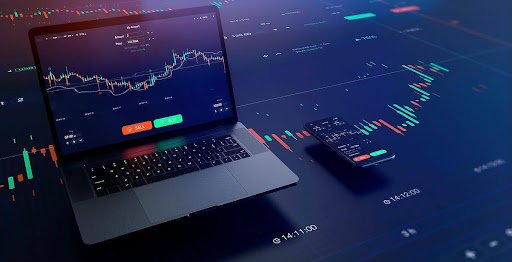Operating in financial markets requires a good and efficient medium. Your trading platform is the most crucial aspect of your trading activity as it affects how your actions are completed and the level of analysis with good tools you have access to. An appropriate platform makes your dealings with the market convenient, providing transparent interfaces and precise execution. In addition, it ensures that you can take advantage when they present themselves, work with risk, and have the best access to the assets that appear in your strategic investment view. Finding the best trading platform that suits your needs is a crucial step toward the success of your trading operations. Therefore, the best platform can be regarded as a secret tool and allows you to enter the ups and downs of trade with confidence and much ease.
Tips for Choosing the Best Trading Platform for Your Goals
Selecting an appropriate trading platform primarily influences individuals who want to invest whether they are beginners or seasoned investors. The right platform cannot fit everyone, as your objectives and trading style are important factors to consider. However, by taking the time to evaluate your options, you will save yourself a lot of regret later:
- Match the Platform to Your Trading Goals: There are various platforms where various types of traders are catered to. Any long-term investor who purchases and holds stocks over the years will be interested in a platform that helps evaluate investments at a close price and provides a broad selection of fundamental investment options. Moreover, the day trader would need analysis software, as well as significantly faster trade access speeds than you do. This is about a safe, sound, and reliable place to store your wealth with few maintenance expenses. Conversely, say you are inclined towards more active trading; that is, day trading or trading options and futures, then your requirements are going to be quite different.
- Understand the Costs Involved: Trading does not come easy; it is essential to know the commission schedule of any site. The platform may take a commission on every trade or a percentage of the value of the trades that you make, or may charge maintenance fees for your account. Commission-free trading is available on some platforms. Still, it is worth delving deeper to determine whether there are other non-commission sources of costs, such as spread markup or inactivity fees. High-frequency traders can incur significant costs even when the commissions per trade are low. A long-term investor making a few trades yearly might find a platform with low per-trade fees and also zero monthly charges more affordable.
- Evaluate User-Friendliness and Tools: The trading platform that is most comfortable to you will be the best one for you. When you are not so experienced in playing, then a complex interface with excessive functionalities can be confusing and result in errors. Look for websites with a clean look, simple site structure, educational tools such as tutorials or a demo account. One of the excellent features of trading is the use of a demo account, which enables you to engage in trading using virtual money and enjoy the system features before risking your own money. In addition to usability, there are trading tools and features that cater to your specific trading style. Are you looking to use advanced charts with numerous indicators?
- Check for Security and Reliability: The last thing to consider is your money’s security when managing it. Ensure that a reputable financial authority regulates the trading platform in your jurisdiction. Moreover, this gives it an element of protection and control, that is, the platform is bound by some level of code of conduct and financial stability. Identify options such as two-factor authentication, data encryption, and explicit procedures outlining what happens to your money in the event of any contingency. In addition to regulatory issues, consider the platform’s historical reliability. Has it been experiencing a lot of outages or technical failures, particularly during busy market hours?
- Evaluate Customer Service and Learning Materials: There is no better support than that of good customer service. Identify any such platform that offers various options for seeking help, such as phone support, live chat, and email, and inquire about their availability. Quick and effective customer service may be a real relief, particularly when you are in a crisis and you need an urgent response, or when you are ticked off. Also, access to quality learning materials may be a strong benefit, especially to novice traders. Do you have an idea of the existence of an article, webinar or course, in which one will be able to obtain an idea of market concepts, trading strategies and be able to utilize their specific tools in their own platform?
- Dive into Research and Analytical Tools: Using basic charting is one thing, but advanced research and analysis tools are available on most platforms, which can put you a step ahead in securing a better price. These may include stock screeners to help you identify companies that meet specific criteria, comprehensive company reports based on expert financial analysis. However, there are more refined technical indicators for in-depth chart analysis. Even on some platforms, such as economic calendars or news feeds, are available in the interface. As an investor who conducts thorough research, it is invaluable to have access to these tools. They can assist you in knowing where to invest, trends in investment and making wiser decisions.
- Evaluate Mobile and Desktop Experience: The trading portal should give a harmless experience on a desktop, a tablet, or a smartphone. The mobile app should not be viewed as a lite version of the desktop platform, but rather should provide core functionality, real-time data, and simple trade execution. Examine how the platform scales across various devices and whether it offers push alerts for key market events or significant trade news. The response time of the mobile app may be crucial for active traders, similarly to the desktop version, under certain circumstances. Staying seamlessly linked across devices ensures you remain tethered to markets and your financial holdings wherever you happen to be situated.
Final Words
To sum up, selecting the platform is a critical step in your financial life. Take into account the frequency of trading, the types of assets you want to work with and good experience. When choosing a platform, one should rely on the tools that suit the style of your analysis, fair fees, and a reliable support service. The best one would enable you to make better decisions and successfully meet the challenges of market trading. Moreover, a demo account on testing platforms may give an understanding without risking actual money.


